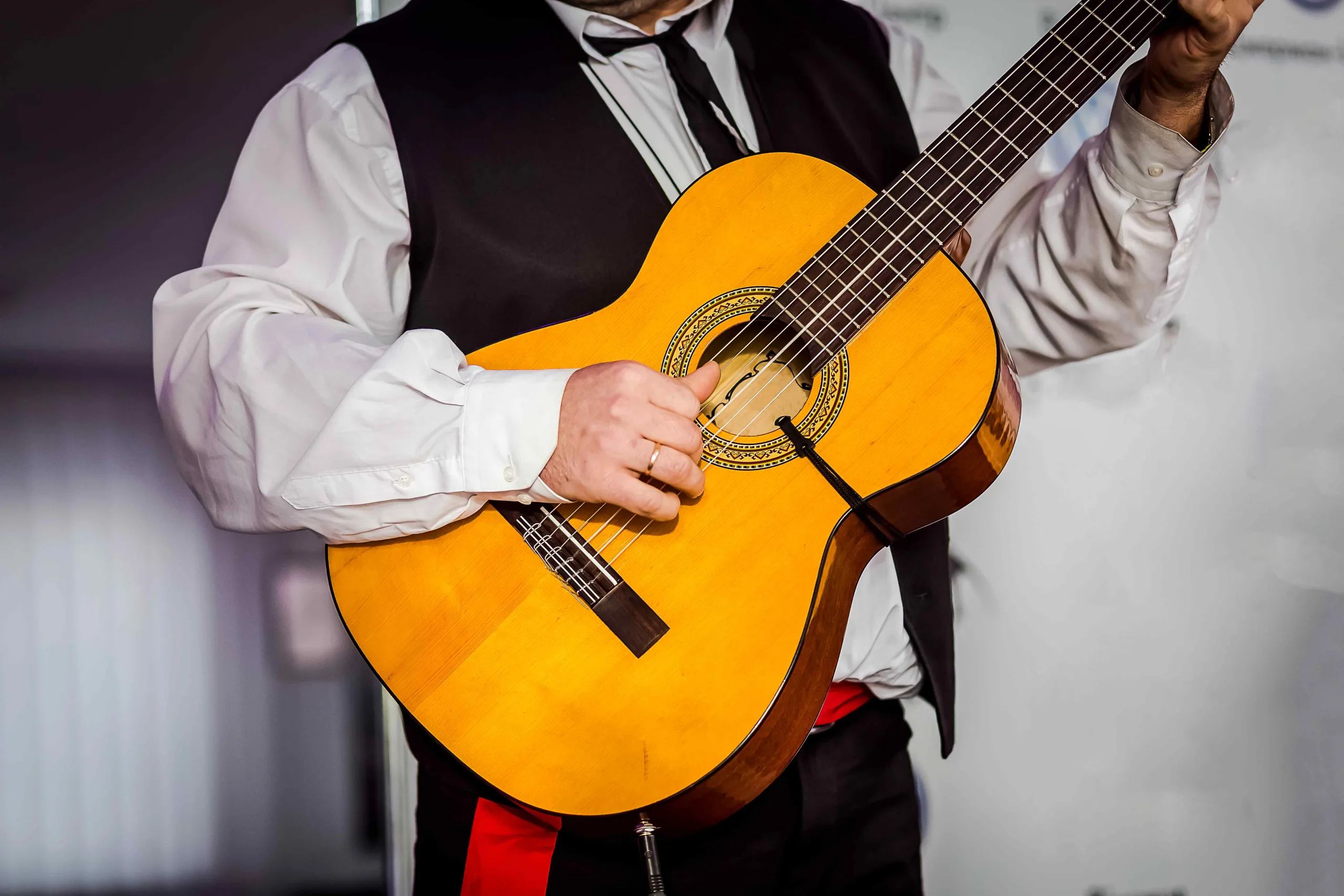When it comes to guitars, the flamenco guitar and the classical guitar stand out as two distinctive instruments with their own uniqueness. While they share similarities in appearance, their differences in tonal qualities, playing techniques, and construction make each one a unique musical companion.
In this article, we will delve into the differences between a classical guitar and a flamenco guitar, shedding light on the factors that make them distinct and exploring the nuances that define their individual sounds and styles. Join us as we uncover the fascinating contrasts between these two captivating instruments.
Differences in Tonewood
Tonewood plays a crucial role in the overall sound and character of a guitar. Classical guitars traditionally feature tops made of either spruce or cedar, with mahogany commonly used for the sides and back.
On the other hand, flamenco guitars, particularly the negra flamenco guitars, are constructed with spruce tops and sides and backs made of Cypress or Sycamore.
In some cases, negra flamenco guitars utilize darker tonewoods such as rosewood or cocobolo for the sides and back, aiming to enhance sound projection and volume.
Differences in String Action
The string action refers to the height of the strings above the fretboard. Flamenco guitars typically have a lower action and higher tension strings compared to classical guitars.
For example, the wound E string on a flamenco guitar can measure as low as 1.6 mm (1/16″) at the twelfth fret, while a classical guitar might have an action around 3.2 mm (1/8″).
The lower action of a flamenco guitar allows for easier and faster playing, particularly when executing complex left-hand techniques like hammer-ons and pull-offs. However, a lower action can potentially reduce the guitar’s volume due to limited string vibration and energy transfer through the soundboard.

Differences in Tuning Pegs
Historically, rosewood or ebony tuning pegs were commonly used until Antonio Torres introduced geared machine head tuners. Initially, geared tuners were expensive, which delayed their widespread adoption. Nowadays, most guitars, including flamenco and classical, feature geared machine head tuners. It’s important to note that the choice of tuner has no direct impact on the guitar’s sound.
Differences in Bracing and Construction
The construction of a guitar greatly affects its tonal characteristics. Flamenco guitars are designed to produce a powerful attack and volume. To achieve this, a flamenco guitar’s top is thinner than a classical guitar.
A thinner top allows for more resonance and amplification when paired with suitable sides and back.
Additionally, flamenco guitars often incorporate a large pickguard piece called a Golpeador. This protective sheet of plastic prevents damage to the top when employing golpe techniques, which involve percussive right-hand finger tapping on the soundboard.
Differences in Sound
The sound is perhaps the most apparent way to differentiate between flamenco and classical guitars.
Classical guitars offer a versatile and balanced tone with decent projection, volume, and sustain. They excel at producing crisp, clear tones across various musical styles.
In contrast, flamenco guitars were originally designed to cut through the sound of flamenco dancing. They possess an extremely loud and piercing sound but with less sustain.
The tone of a flamenco guitar decays quickly, creating a distinctive and inherently Spanish sound that is difficult to put into words but easily recognizable.

Differences in Playing Techniques
A key technique in flamenco guitar is the golpe, a percussive method where the right-hand fingers tap the soundboard using flesh or nails. Without proper protection, this technique can damage the soundboard.
That’s why, as we already mentioned, flamenco guitars feature a Golpeador, a protective layer affixed to the front of the instrument. In the past, Golpeadores were prominently visible and made of plastic. Nowadays, they are constructed from thinner, transparent plastic, offering both functionality and aesthetic appeal.
Differences in Weight
The weight and wood selection influence the overall tone of the instrument. Flamenco guitars are generally lighter and thinner than classical guitars.
The lighter weight of a flamenco guitar contributes to its responsiveness and agility, enabling players to execute rapid and intricate flamenco techniques with ease.
Conclusion
Classical and flamenco guitars have notable differences in tonewood, playing techniques, and sound.
Classical guitars offer versatility and balanced tones, while flamenco guitars deliver intense and rhythmic sounds.
Whether you prefer the fiery passion of flamenco or the timeless elegance of classical music, both guitars provide unique opportunities for musical expression.
Related articles:
What is the difference between classical and acoustic guitar

